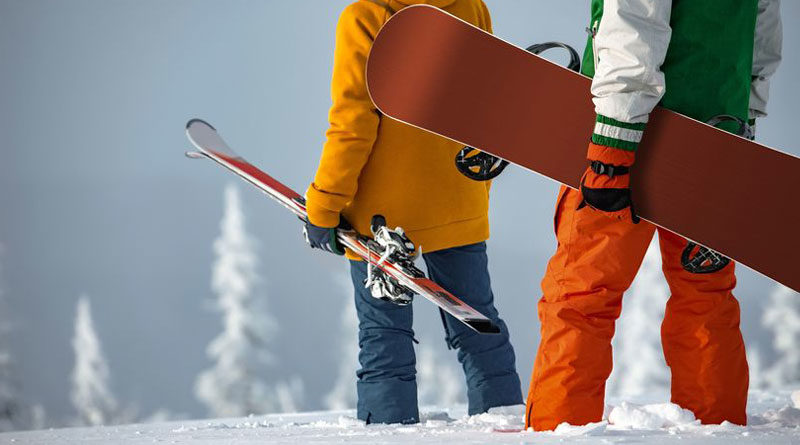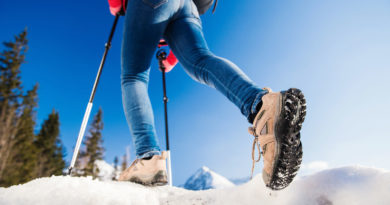Ski vs. Snowboard Pants: A Comparison
Ski and snowboard pants both serve almost the same purpose because both operate in the same environment. But both types of pants are marketed as different. Beginners, or people who are into one sport and looking to try the other, often ask whether they can wear the same pants for both of them.
The differentiation is a small marketing ploy that doesn’t matter for amateurs, beginners, or someone who rides only a few times a year. The differences are so small that they only affect performance-oriented riders in both sports.
But to satisfy your curiosity, below are the things that make the two types of pants different.
The Distinction in Both Types of Pants
The following are the key differences between both types of pants:
Fit
You can tell the difference between ski and snowboard pants by looking at the fit of the two pants. Fit is a major difference between both types. Ski pants are tighter and more form-fitting. They are designed to hug the body to cut down drag produced by wind.
Having aerodynamic pants helps skiers achieve faster speeds easily. But a snug fit does limit mobility to some extent. Ski pants also feel stiffer compared to snowboard pants. But a tight fit leaves less room for cold air in the pants providing better heat retention.
Snowboard pants have a looser baggy fit owing to their skateboard-inspired background. The baggy fit is not only stylish but also allows for freedom of movement. Snowboarders like to perform stunts and tricks similar to skateboarding. They need to move freely. But the baggy fit of snowboard pants doesn’t provide good heat retention. You would probably need more layering underneath.
Padding
Skiing requires two skis operating separately. There is always a chance that the leg cuffs of ski pants get cut by the edge of the opposite ski. There is always a chance that skiers may fall at high speeds on their backs. For such reasons, the leg cuffs and the back of ski pants are often heavily padded and reinforced.
Snowboarders are bound to their snowboards in a way that doesn’t require reinforced leg cuffs, so, you won’t find them in snowboard pants. The back of the pants is still padded in case the riders fall. But snowboard pants have padding on their knees that is not found on ski pants.
Style
Snowboard pants are the more stylish of the two. A baggy fit with more pockets gives snowboard pants a more cargo look. The color and prints are also better. The skateboard culture has a lot of influence over that sport.
Ski pants have a more traditional style. They have fewer pockets to remain more aerodynamic. Ski pants look almost the same and style is not the primary focus. But the colors on both types of pants are loud and bold for enhanced visibility.
What to Look for in Both Types of Pants?
While there are minor differences in both ski and snowboard pants, the basic function is the same. They protect you from wind and cold. For this protection, both pants should have certain features that you should look for while buying a pair for yourself.
Comfort
Comfort is one of the most important features of any pair of pants. There is no point in having a pair of pants that do not feel comfortable. However, comfort is highly subjective. A pair of pants that is comfortable for one person may be uncomfortable for another.
Comfort is largely based on the fit of the pants. The wrong fit would make you feel uncomfortable. Ski pants have a snug fit but they shouldn’t be tight enough to limit movement. Snowboarders usually have a baggier fit but too baggy would get in the way. Everything should be balanced.
You may find many skiers on a resort who prefer a baggy fit for their pants. Similarly, some snowboarders like a more cut-down fit instead of a baggy one. It’s a matter of preference. Skiing or snowboarding, choose pants that are comfortable for you.
Waterproofing
Another important feature is waterproofing. Winds are cold in the mountains. If you get cold by precipitation, moisture, or snow getting inside your pants, you can be at risk of hypothermia.
Ski and snowboard pants should have the capability of protecting you from moisture and snow. High-end pants come with Gore-Tex. Gore-Tex is the best you can get in terms of waterproofing. Budget options, on the other hand, use in-house waterproofing technologies. These technologies are not as good as Gore-Tex, but some can hold up decently.
Synthetic materials in the face fabric of the pants like polyester or nylon are inherently water-resistant and don’t absorb water. Denim or cotton pants should be strictly avoided because they absorb water and sweat and take longer to dry.
Pants further include gaiters and jacket-to-pant systems for added protection from the snow. High-end pants have complete seam taping while budget options only have partial or critical seam taping. In summary, the more you pay the better the waterproofing in your pants.
Warmth
Ski and snowboard pants are offered as both, shell pants and insulated pants. Shell pants are composed of a hard shell that is waterproof and windproof. But shell pants lack insulation. You would have to put layers underneath to keep yourself warm. They are best for people who run hot.
For people who run cold, insulated pants are available. The insulation is made of synthetic material. It is measured in grams. Pants with 80 grams of insulation would be warmer than pants with 60 grams of insulation.
Breathability
Breathability is also essential. It allows sweat to be taken away from your body. Sweat accumulating in your pants is a problem on the slopes as it can make your pants cold putting you in trouble.
On a resort, you usually don’t need a very breathable pair of pants. But if you are into backcountry or side-country skiing or snowboarding, then breathability becomes a priority. Going uphill on slippery ice is exhausting causing overheating. Your pants should be breathable enough to wick the sweat away from your body in that case.




